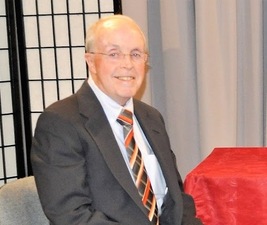2022 Distinguished Citizens Award Dinner
Distinguished Citizen Awards Dinner
Tuesday, October 18, 2022
Lombardo’s
6 Billings Street, Randolph, MA 02368
Reception 6:00 pm – Dinner & Program 7:00 pm
2022 Honorees
Distinguished Citizen Award Recipient
 James M. Dunphy, President & CEO
James M. Dunphy, President & CEO
South Shore Bank
The Distinguished Citizen Award is presented to community or business leaders who provide outstanding civic service to the adult and/or youth in the community. Those who receive the award are not necessarily Scout volunteers, but rather individuals who personify what the Boy Scouts of America stand for – good citizenship, outstanding moral fiber with a dedication to others, and for living their lives by the Scout Oath and Scout Law.
Distinguished Scouter Award
 Arnold Briggs, Educator (retired)
Arnold Briggs, Educator (retired)
Scouter & Community Volunteer
The Distinguished Scouter Award is presented to a Scouter who provide outstanding civic service to the adult and/or youth in the community. Those who receive the award are not only Scout volunteers, but also seek no return for their service other than the satisfaction of aiding their fellow citizens, their community, and their nation and for living their lives by the Scout Oath and Scout Law.
Second Century of Leadership Award
Accepted by David Dirubbo, President
Second Century of Leadership Award is presented to a company or organization that consistently sets the pace for the corporate leadership and philanthropic support of the South Shore and MetroWest communities. The honoree’s work and leadership exemplify the ideals and successes of the Boy Scouts of America. The organization’s corporate citizenship and community involvement set the example of what can be achieved through hard work, leadership and character, traits that set both organizations apart.
Master of Ceremonies
Butch Stearns, Sports Anchor
Boston 25 News
Guest Speaker
Matt Slater,Wide Receiver
New England Patriots
You may register and pay online or fill out the mail-in registration form.
Registration and program book ad’s must be received by September 30, 2022.
If you have any questions, please email: Development Office



